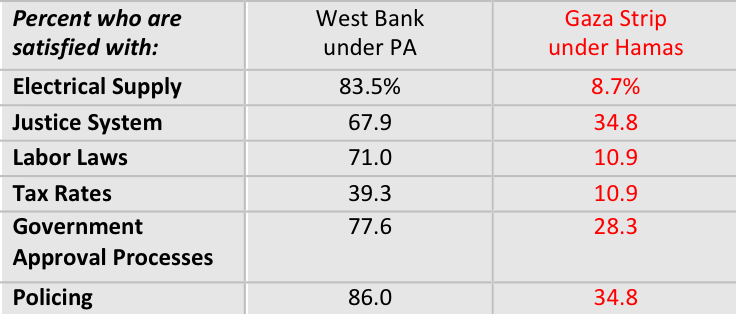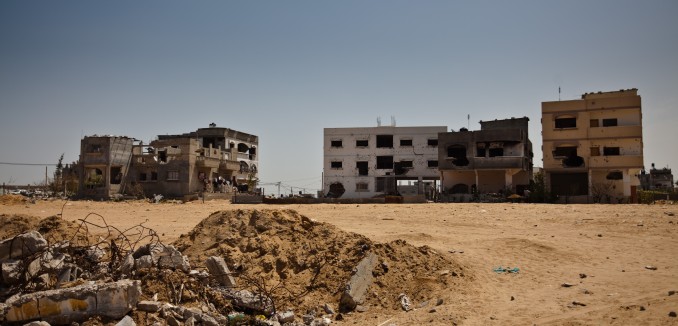In June 2007, two years after Israel ended its occupation of the Gaza Strip and dismantled its settlement communities, the terrorist group Hamas took over control of the territory from the Palestinian Authority after months of violence between their rival forces. Since then, Hamas has kept a tight grip on power, supported largely through the financial and military assistance of Iran and Qatar.
This month marks the tenth anniversary of Hamas rule, and it’s a good time to take stock of how Palestinians have fared there compared with their counterparts in the West Bank. Gaza is home to close to two million Palestinians.
The core economic data, as provided by the Palestinian Central Bureau of Statistics (PCBS), suggest a dramatic disparity between the two.
Real per capita GDP figures, for example, show a sluggish economy in Gaza, with the number increasing from $806 to $996 in the eight years between 2008 and 2015—or a total overall growth of 19.9%; this compares with the West Bank, where the per capita GDP grew from $1,728 to $2,276 in the same period, or an overall growth of 31.2%.
The growth in unemployment has also been far more devastating in Gaza than in the West Bank. In 2007, the West Bank saw 15.8% unemployed; by 2017 that figure had risen three percentage points to 18.8%. In Gaza, however, unemployment rose by nearly 15 percentage points during that same period, from 26.4% to 41.1%. Average daily wages dropped in Gaza during that period as well, from NIS 64.1 to NIS 58.7 over ten years, falling 8.4%, while in the West Bank they grew from NIS 89.7 to NIS 101.5, reflecting a 13.2% rise.
Life in Gaza has become increasingly difficult since Hamas took over and plunged the strip into successive conflicts with Israel, pouring resources including international aid money into military operations rather than public works. Gaza residents today enjoy far fewer cultural and educational opportunities than West Bank Palestinians, and the lack of electricity and reliable clean water has resulted in schools shutting down and widespread disease.
A survey conducted by the PCBS in 2015 revealed a much higher degree of public dissatisfaction among Gazans towards their own government when compared with the West Bank:

Source: PCBS
In addition, the poll showed that more than 93.5% of Gazans believe that high taxes prevent economic growth, compared with just 56.7% in the West Bank; similarly, 78.3% of Gazans believe that high water fees prevent economic growth, compared with 29.9% in the West Bank.
Finally, and most dramatically, fully 48% of Gazans expressed a desire to emigrate; in the West Bank that number was just 24%.
[Photo: Gaza 2009 Project by Marius Arnesen/Wikimedia]




